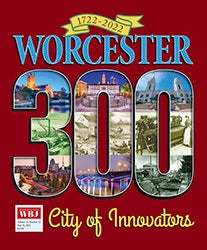Energy: Future Looks Dim For Incandescent Bulb
New bill backs energy-efficient lights
By Paul Davidson
USA TODAY
Turn out the lights on traditional incandescent bulbs.
A little-noticed provision of the federal energy bill, which is expected to become law, phases out the 125-year-old bulb over the next four to 12 years in favor of a new generation of energy-efficient lights that will cost consumers more but return their investment in a few months.
The new devices include current products like compact-fluorescents and halogens as well as emerging products such as light emitting diodes and energy-saving incandescent bulbs.
Conservation Cues
"This will get us in line with the rest of the advanced industrial world in moving toward more efficient lighting," says Sen. Jeff Bingaman, D-N.M., chairman of the Senate Energy committee and author of the Senate measure requiring the tougher standards.
The energy bill passed the Senate last week and is expected to clear the House this week. President Bush has said he will sign it.
Under the measure, all light bulbs must use 25 percent to 30 percent less energy than today's products by 2012 to 2014. The phase-in will start with 100-watt bulbs in January 2012 and end with 40-watt bulbs in January 2014. By 2020, bulbs must be 70 percent more efficient.
Compact fluorescent bulbs already meet the 70 percent efficiency standard. A compact fluorescent costs about $2 versus about 50 cents for an incandescent. While an incandescent lasts about seven months, a fluorescent burns six times longer.
It also saves about $5 a year in electricity costs, paying for itself in as little as four months, says the American Council for an Energy Efficient Economy.
Other bulbs are emerging. Home Depot has started selling a $5 Philips halogen that's 30 percent more efficient than incandescents. Its advantage: it doesn't emit the yellowish tints that can characterizes fluorescents and can easily be used with a dimmer.
General Electric says it will develop an incandescent that's 30 percent stingier than today's bulbs by 2010. Earl Jones, a GE senior counsel, says it likely will cost more than current bulbs but less than a fluorescent. Also in the pipeline: light-emitting diodes that cost much more but last about 12 years.
The new rules will save consumers $40 billion in energy and other costs from 2012 to 2030, avoid construction of 14 coal-fired power plants, and cut global-warming emissions by at least 51 million tons of carbon annually, ACEEE says.
"This is one of the most significant policies ... in terms of reducing electric demand and addressing global warming," says Lowell Ungar of the Alliance to Save Energy.
A version of the bill the House passed last summer would have exempted bulbs with odd shapes, such as globular lights on make-up mirrors. That could have led small makers to market such bulbs as cheaper options.
The new measure largely closes such loopholes by exempting, for example, only larger globular bulbs, which don't fit in most lamps.









0 Comments